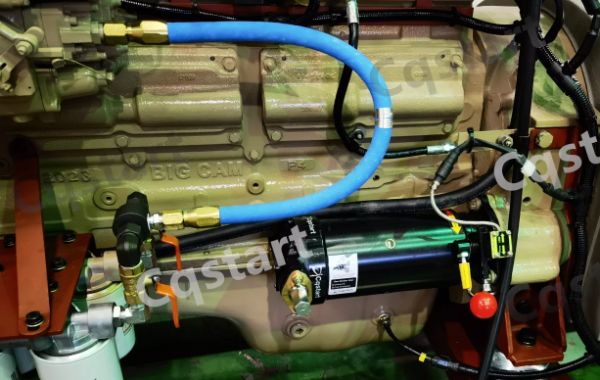Starting a diesel engine without a battery might sound daunting, but there are several effective methods that can be used to get the engine running when the battery is unavailable or non-functional. These techniques typically involve mechanical power, external power sources, or specialized equipment to initiate the engine's operation. Below are the most reliable methods:
1. Use a Spring Starter
When a diesel engine needs to start without a battery, a spring starter is one of the best solutions. This device works by storing mechanical energy in a spring and then releasing that energy to start the engine.
- No battery required: The spring starter operates independently of the battery, making it ideal for environments with unreliable power or situations where a battery is not available.
Why Choose a Cqstart Spring Starter?
The Cqstart spring starter is a top-tier choice for reliable engine starting. Cqstart has been dedicated to designing and refining spring starters for decades, ensuring high-quality performance and compatibility with various diesel engines, ranging from small engines under 2L to large engines up to 50L.
Key Benefits:
- Comprehensive Testing: Each spring starter undergoes rigorous testing, ensuring high performance across torque, energy, speed, and stability.
- Safety Features: Cqstart starters are equipped with micro-lock prevention to avoid accidental double-starts, enhancing engine safety and longevity.
- Durability: With maintenance-free grease and a protective coating resistant to fire, oil, water, and corrosion, Cqstart starters are built to last, even in harsh environments.
- Compact Design: The compact structure eliminates the need for additional systems, reducing installation complexity and operational costs. The spring starter operates in just 10-30 seconds.
- Versatile Performance: Cqstart performs reliably in extreme temperatures, providing reliable starting in various conditions.
- Cost-Effective: Compared to hydraulic or gas-powered systems, Cqstart offers a budget-friendly solution without needing extra equipment like compressors or generators.
2. Use a Hand Crank
Older diesel engines often come with a manual crank or pull-start system, a traditional method commonly used in vintage models or smaller engines. This method involves manually rotating the engine's crankshaft to generate the necessary force for combustion and engine startup.
While it is effective for low-power or older engines, it is physically demanding and impractical for modern, high-power diesel engines. As a result, this method is becoming less common, replaced by more advanced starting systems in most modern machinery.
3. Use an Air Starter
For heavy-duty applications like large industrial machinery, marine engines, and construction equipment, an air starter is commonly used to start diesel engines. This method utilizes compressed air to power the engine's starter motor, which turns the crankshaft and begins the combustion process.
- Advantages: Air starters are especially reliable for large diesel engines found in ships, trains, and other heavy machinery.
- Challenges: Air starters require specialized equipment, including air compressors and storage tanks, making them more costly and less accessible for general use. Despite these challenges, they are ideal for areas where electrical power is unavailable or impractical.
4. Use an External DC Power Source
If the engine's battery is dead but the electrical system is intact, an external power source can be used to power the starter motor. Options like a jump-start pack or another vehicle's battery can provide the necessary electrical current to start the engine.
- Portable and Convenient: Jump-start packs are easy to use, especially in emergency situations where the primary battery is not working.
- Limitations: This method depends on the availability and reliability of an external power source. In remote or off-road locations, finding a dependable power supply may be difficult, making this solution less practical. Frequent reliance on external power may also indicate underlying issues with the battery or electrical system that need attention.








